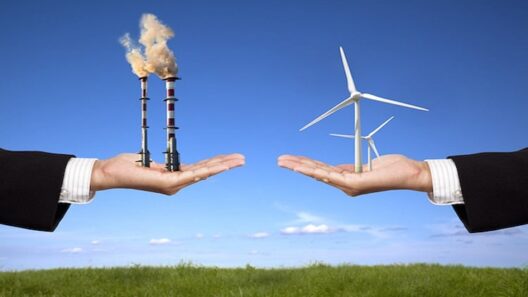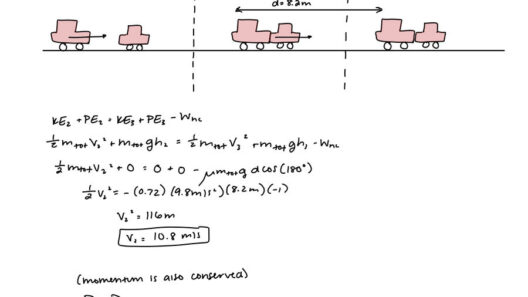In a world where every flick of a switch has environmental consequences, conserving energy during your working day becomes a necessary endeavor. Imagine your workplace as a bustling ecosystem, where energy consumption is akin to a river—constantly flowing, powerful, yet capable of depletion if not managed wisely. By implementing strategic methods to conserve energy, not only do you reduce your carbon footprint, but you also cultivate sustainability within your own professional domain. Here are some smart energy tips that can help you navigate the currents of energy efficiency.
1. Optimize Natural Light
Just as a flower thrives under the sun, your workspace can flourish when illuminated by natural light. Opting for daylight instead of artificial lighting not only saves energy but also boosts productivity. Position desks near windows and utilize blinds skillfully to regulate sunlight. When possible, integrate light-colored walls and reflective surfaces that maximize illumination. Consider a workspace that mimics the gentle glow of the morning sun; it encourages a sustainable atmosphere while enhancing focus.
2. Invest in Energy-Efficient Equipment
In the modern workplace, equipment acts as both a tool and a responsibility. Choosing energy-efficient devices, such as Energy Star-rated appliances and LED lighting, is akin to planting seeds that will yield fruit in the form of reduced energy bills and less pollution. These devices consume less electricity, thus lowering operating costs and extending their lifespan—a win-win solution. Ensure that office devices, including printers and computers, have energy-saving modes activated to mitigate unnecessary consumption during idle periods.
3. Embrace Remote Work
Consider remote work as the metaphorical wind beneath the wings of energy conservation. By minimizing the need for commuting, energy expenditure associated with transportation is significantly reduced. Promote flexible work schedules that allow employees to work from home or remotely whenever feasible. This not only alleviates individual energy consumption but also fosters a work culture imbued with balance and trust—a harmonious relationship that is beneficial to both employees and the environment.
4. Implement Smart Technology
Imagine transforming your workspace into a well-oiled machine, where every cog and gear operates in perfect harmony through smart technology. Smart thermostats, automated lighting systems, and energy management software can fine-tune energy usage in real-time. Such technologies act like vigilant caretakers, ensuring that energy consumption aligns with actual needs. Schedule heating or cooling systems to operate only during business hours, and allow motion sensors to control lights in unoccupied areas—these small adjustments contribute to a significant cumulative impact.
5. Cultivate a Culture of Consciousness
Much like bees working collectively for the health of the hive, fostering an energy-conscious culture can enhance your workplace’s sustainability. Engage employees in energy-saving initiatives through workshops and informational campaigns. Encourage them to turn off lights, computers, and other electronic devices when not in use. Creating an open dialogue about energy conservation not only builds camaraderie but also empowers individuals to act as stewards of the environment—small actions can lead to monumental changes.
6. Encourage Efficient Breaks
Your daily breaks can be likened to a well-deserved exhale after a deep breath—necessary for rejuvenation, yet they can also become opportunities for energy conservation. Promote walking or active breaks that utilize the natural surroundings instead of allowing employees to become sedentary. Intervals for relaxation should encourage employees to step outside and absorb the natural world, ultimately reducing the need for energy-consuming leisure activities within the office.
7. Monitor and Analyze Energy Usage
Just as a sailor navigates the sea by charting coordinates, monitoring energy consumption is crucial for effective conservation. Conduct regular energy audits to identify high-consumption areas within the workplace. Use data analytics to understand patterns and behaviors related to energy use. Adjust policies and practices based on these findings to optimize energy efficiency. Understanding and addressing energy consumption trends can illuminate pathways toward significant reductions.
8. Lead by Example
Leaders set the tone for energy efficiency in any organization. By modeling environmentally friendly behaviors—whether it’s utilizing reusable items instead of single-use products or actively participating in energy-saving practices—leadership can inspire a collective commitment to conservation. An organization’s culture is like a river; it flows from the source—when leaders embrace sustainable practices, the entire organization is likely to follow suit.
9. Optimize Heating and Cooling Systems
The comfort of a well-regulated environment is essential for productivity, yet outdated heating and cooling systems can lead to energy wastage that is both appalling and unnecessary. Regular maintenance is crucial; clean filters and adequate insulation are the building blocks of efficiency. Consider installing zoned heating and cooling that allows for tailored temperature settings based on usage patterns, ultimately creating a more efficient workspace.
10. Foster Collaboration on Energy Projects
Inviting employees to collaborate on energy-saving projects is akin to orchestrating a symphony in which every note contributes to a melodious whole. Form teams dedicated to brainstorming and implementing energy-reduction projects. This collective effort not only enhances social bonds but also cultivates a commitment to energy efficiency that will resonate throughout the workplace. Encourage innovation and the sharing of ideas to create a community dedicated to sustainability.
Conserving energy during your working day requires a deliberate and multifaceted approach. By viewing energy conservation through the lens of shared responsibility and opportunity, you’ll be able to harness a wealth of practices that not only benefit the environment but also instill a sense of purpose and achievement within your workplace. The journey towards energy conservation is not merely a task; it is a commitment to contributing positively to the ecosystem in which we work and live. Let the river of energy flow wisely and responsibly.







